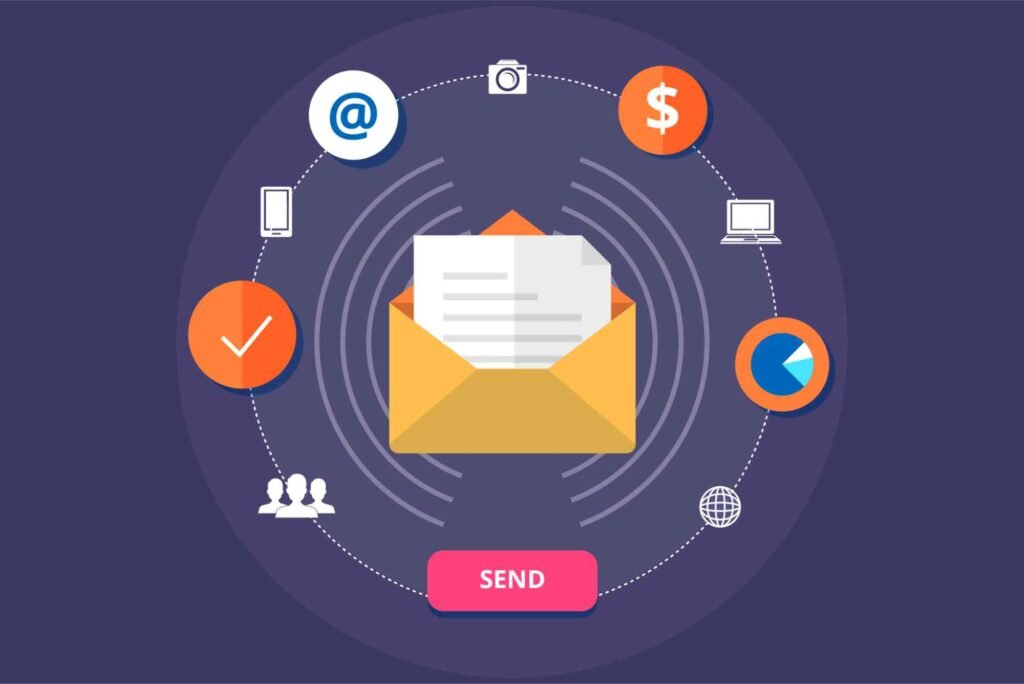Introduction
Email marketing is a powerful tool for engaging audiences, but large, unoptimized images can slow down emails, affect deliverability, and reduce engagement. Optimizing images ensures faster load times, improved user experience, and higher conversion rates. This guide will provide step-by-step instructions to properly optimize images for email marketing campaigns.
What Is Image Optimization for Email Marketing?
Image optimization for email marketing refers to the process of reducing the file size of images without compromising quality to ensure faster email load times. This includes choosing the right file format, resizing, compressing, and using responsive design techniques. Properly optimized images enhance email deliverability, boost engagement, and improve overall campaign performance.
Step-by-Step Guide to Optimizing Images for Email Marketing
Choose the Right Image Format
Selecting the correct image format is crucial for balancing quality and file size. The three main formats used in email marketing include:
- JPEG: Best for photos and complex images, offering a good balance of quality and compression.
- PNG: Ideal for images with transparency but results in larger file sizes.
- GIF: Suitable for simple animations, but limited in color depth.
For most email campaigns, JPEG is recommended due to its optimal balance of quality and file size.
Resize Images for Email Compatibility
Email clients display images differently across devices. To ensure compatibility:
- Keep images under 600 pixels wide for optimal rendering.
- Maintain an aspect ratio that fits within email layouts.
- Resize images before uploading them to prevent unnecessary scaling.
Using responsive images ensures that they appear correctly on all screen sizes, from desktops to mobile devices.
Compress Images Without Losing Quality
Compression significantly reduces image file sizes without sacrificing quality. Tools like Image Compressor help minimize file sizes while maintaining clarity.
Best practices for compression include:
- Keeping image file sizes under 100 KB for emails.
- Using lossless compression for PNG files and lossy compression for JPEGs.
- Avoiding over-compression, which may cause pixelation.
Use Responsive and Retina-Ready Images
Ensure images scale properly across different devices by:
- Using CSS media queries for responsiveness.
- Saving images at 2x resolution to maintain quality on high-resolution (Retina) displays.
- Testing email designs across various devices to confirm image adaptability.
Optimize Alt Text for Better Accessibility
Alt text helps users understand images when they fail to load and improves accessibility. Best practices include:
- Writing concise and descriptive alt text.
- Including keywords naturally to enhance SEO.
- Avoiding unnecessary words like “image of” or “picture of.”
Reduce Image Usage for Faster Load Times
While images enhance visual appeal, excessive use can slow email loading times. To optimize performance:
- Use images only when necessary to convey key messages.
- Balance text and images for a better text-to-image ratio (recommended: 80% text, 20% images).
- Minimize decorative elements that do not contribute to the campaign’s goal.
Best Practices for Optimizing Images in Email Marketing
To summarize the key steps, follow these best practices:
- Select the right file format (JPEG for general use, PNG for transparency, GIF for animations).
- Resize images to fit email layouts and prevent distortion.
- Compress images using tools like Image Compressor to reduce file size.
- Ensure responsiveness so images display correctly on all devices.
- Write effective alt text for better accessibility and SEO benefits.
- Limit the number of images to prevent slow loading times and improve email deliverability.
By following these guidelines, marketers can create visually engaging emails without sacrificing performance.
FAQs About Image Optimization for Email Marketing
1. What is the ideal image size for email marketing?
For best results, keep images under 600 pixels wide and less than 100 KB in file size to ensure fast loading.
2. Why should I compress images for emails?
Compressed images load faster, improve email deliverability, and reduce bounce rates, leading to better engagement.
3. How can I make images responsive in emails?
Use CSS media queries and set the width to 100% so images adjust automatically to different screen sizes.
4. What happens if my email images don’t load?
If images fail to load, alt text will display, ensuring users understand the content. Always test emails before sending.
5. Where can I optimize images for my email campaigns?
You can use Image Compressor to reduce file sizes without compromising quality.
Optimizing images for email marketing campaigns enhances user experience, improves email deliverability, and boosts engagement. By following the steps outlined—choosing the right format, resizing, compressing, and ensuring responsiveness—you can ensure that your emails load quickly and look professional.
For expert digital marketing services, check out Digital Ranker Dubai. If you’re looking for their location, visit Digital Ranker Dubai Location.
By implementing these optimization techniques, you’ll enhance your email marketing performance, resulting in better conversions and higher ROI.






